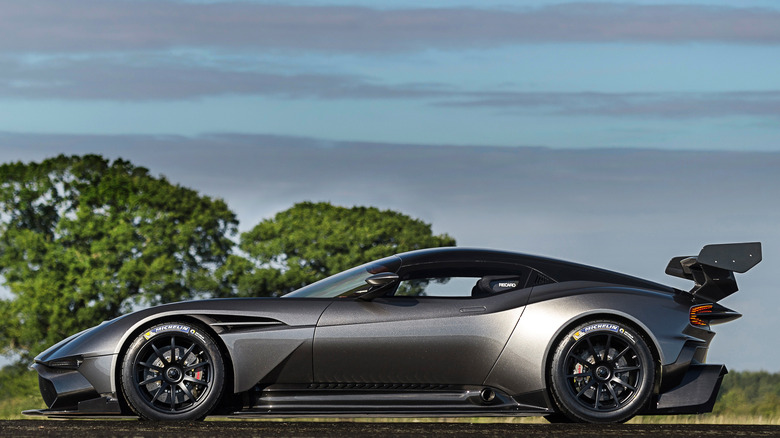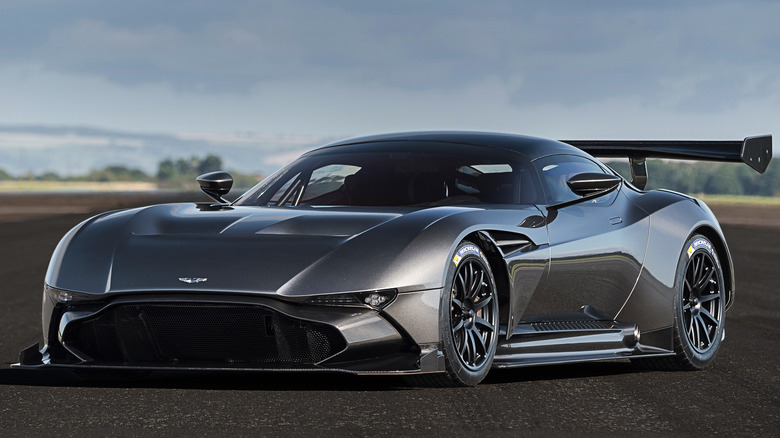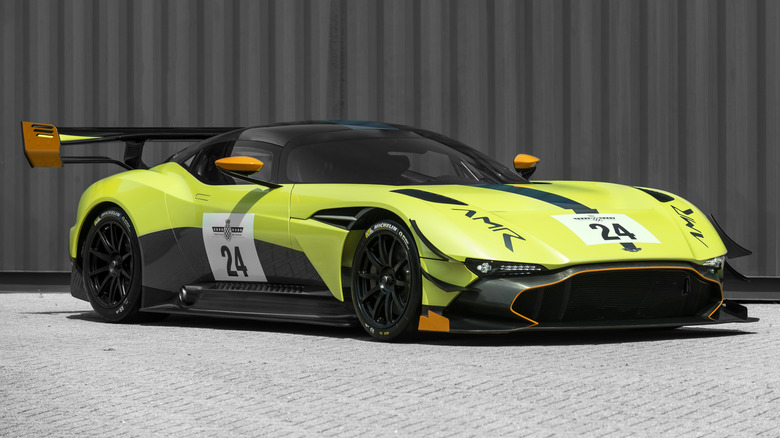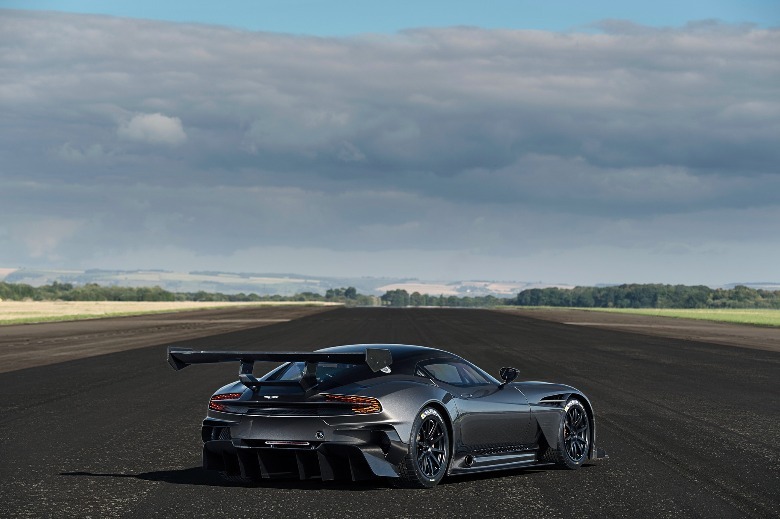Here's Why The Aston Martin Vulcan Costs Over $2.3 Million
You wouldn't typically associate an Aston Martin with a "wild" racing car, but that's a straightforward way to describe the British automaker's Vulcan track-only hypercar unveiled in 2015. Having the reputation of being Aston's most outlandish four-wheeled creation, the unhinged Vulcan demands a steady hand, a lead foot, and over $2.3 million in pocket change.
The controversial Jeremy Clarkson took the Vulcan for a spin shortly after its maiden debut. He likened the driving experience to "being inside a room with a bear that's thinking of attacking you." Nice.
The Aston Martin Vulcan is not your typical super GT despite having the underpinnings of the brand's magnificent One-77, a limited-edition supercar featuring a 77-unit production run and a 7.3-liter V12 engine. Instead, it's a stripped-down, bare-bones track car with an all-carbon body shell, an equally raucous 7.0-liter V12 racing motor, and street-based styling that will make any car lover take a second look.
Aston Martin's wild child
What did you expect from what the brand refers to as its "wildest car ever?" Proof of the Vulcan's wild side is its racing-derived V12 engine from the brand's Vantage GT3 race car. As if that's not enough, the blokes at Aston Martin gave it an extra liter of displacement, growing from a monstrous 6.0-liter to a 7.0-liter unit and unleashing a heady 820 horsepower and "truly extreme performance," said Aston Martin.
And since the Vulcan is not required to adhere to noise regulations, Aston could give it a God-like soundtrack so loud that Jeremy Clarkson had to wear a face microphone to be heard amidst all the fury. Jeremy had the Vulcan in the lowest driving setting, limiting the power output to only 550 horsepower. But still, the noise is unholy, and it gets louder the deeper you push the pedal.
Moreover, the Vulcan features a list of performance equipment. It has race-ready suspension, an FIA-compliant steel roll cage, and a bevy of aero-enhancing body kits to produce over 3,000 pounds of downforce, more than the Vulcan's 2,976-pound (1,350 kg) curb weight. Inside, it has figure-hugging Recaro carbon fiber seats and an F1-style steering wheel.
Why does the Aston Martin Vulcan cost $2.3 million?
If the looks, the noise, the performance, and its mad reputation are not worth Vulcan's $2.3 million price tag, then maybe its ultra-exclusive production run would make you reconsider. Aston Martin only made 24 examples of the Vulcan, and only three units made it to America.
Aston unveiled the Vulcan AMR Pro package in 2017. It's available to all 24 units of the Vulcan and features more go-fast aero components to make your head spin. It has custom louvered panels above the front fenders, dive planes on each side of the nose, a humongous front splitter, and a dual-plane rear wing to produce 4,000 pounds of downforce. In addition, the package includes shortened gear ratios for faster acceleration – all for an additional $200,000.
It's easy to think of the Aston Martin Vulcan as another rich person's toy that would most likely spend most of its life in a climate-controlled garage. However, a third-party British automotive engineering company called RML Group converted one Vulcan into a street-legal machine, allowing its lucky owner to drive it anywhere they want. We have no word how much that cost, but we know that converting a $2.3 million racing car to a road car is not for shallow bank accounts.



